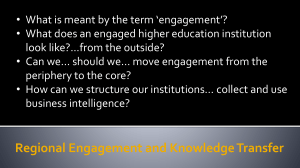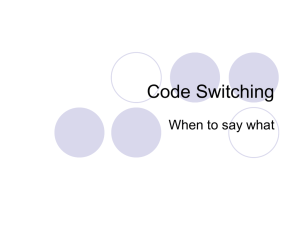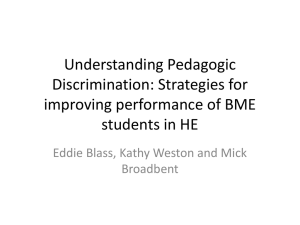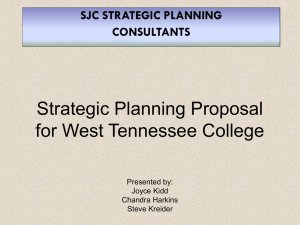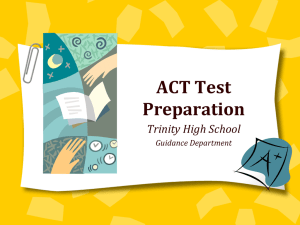Semi-Formal Reports: Differences & Similarities
advertisement
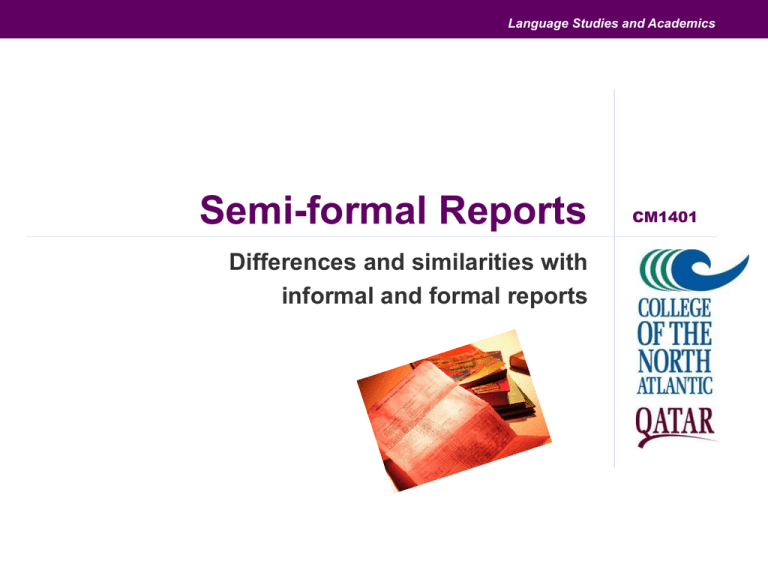
Language Studies and Academics Semi-formal Reports Differences and similarities with informal and formal reports CM1401 Language Studies and Academics Informal Report May not be requested or expected Discussion of the topic is brief One to 3 pages When the topic suits a direct, informal presentation to the reader Correspondence format Letter Memo Email Language Studies and Academics Correspondence style reports Letter style Memorandum style Prepared by one organization for another Good security/privacy Communication between people within an organization Good security/privacy Email style Internal or external communication Only for brief reports When security/privacy is not important Language Studies and Academics Formal Reports Six pages or more Informational, Analytical, Persuasive In response to a request for a detailed report or when one is expected When the topic is important to policy and/or business processes and/or has legal implications Language Studies and Academics Semi-formal Report Four to 10 pages More detail than correspondence style Informational, Analytical, Persuasive Often prepared on request or is expected as part of business, but may be volunteered When the topic is important to policy and/or business processes and/or has legal implications Language Studies and Academics Parts of… Formal Report Transmittal letter included Report does not use letterhead or memo template Title page Executive Summary Table of contents List of illustrations Introduction / Opening Background General discussion/analysis 1. 2. 3. 4. 5. 6. 7. 8. 9. 1. 1. 11. 12. 2. 3. 4. 5. 6. 7. 8. 9. 1. 1. 11. 12. One or more sections Outcomes 10. May include recommendations List of references (if sources cited) Appendix is optional Transmittal letter is optional Report does not use letterhead or memo template Title page is optional No Summary Table of contents is optional List of illustrations not included Introduction / Opening Background is optional Details / Analysis of data 1. One or more sections Conclusion 10. Semi-formal Report May include recommendations, but not always List of references is optional Appendix is optional Language Studies and Academics Formatting Formal Report 1. 2. 3. 4. 5. 6. Three or more levels; main headings always begin new page Top/bottom margins of 1st page of sections are different from other pages Paragraphs not indented Double line space between paragraphs Bullet/numbered lists Headers usually included Semi-formal Report 1. 2. 3. 4. 5. 6. Not more than two levels; main headings do not begin new page Top/bottom margins are same on all pages of each section Paragraphs not indented Double line space between paragraphs Bullet/numbered lists Headers seldom included Language Studies and Academics Report Structure Guidelines Action opening Refer to reader’s needs that relate to the topic Summarize the report’s main message Respond to reader’s previous communication (letter, memo, email, phone call) on the topic Language Studies and Academics Report Structure Guidelines Background Review circumstances leading up to the topic of the report Define important terms Explain technical background Review a related problem or an already proposed solution Language Studies and Academics Report Structure Guidelines Details Who What When Where Why How much? Analysis of Data Language Studies and Academics Report Structure Guidelines Action closing Summation of the topic and identification of main issues Recommendations/suggestions What should the reader or the reader’s organization do next What will the report writer do next List of possible actions, without indicating who should do them Language Studies and Academics Writing a short report efficiently Analyze the report’s purpose and audience List the report’s content; evaluate and revise the content Develop a rough outline with headings Compose the first draft Revise the content of the draft Edit the writing for clarity, conciseness and coherence Proofread the report for errors and correct them Language Studies and Academics Another way to think about reports … So far we have looked at reports in terms of: 1) 2) 3) Organization – Pyramid / Inverted Pyramid Intended Reader – Non-technical / Semi-technical / and Highly-Technical Document Form – Informal / Semi-formal We should also know types reports based on function … Language Studies and Academics Six Types of Report by Function 1. Information Report: (informal & semi-formal) 2. Recommendation Report: (informal & semi-formal) 3. Justification Report: (informal & semi-formal) Presents information, but does not analyze it (eg. sales reports). Often based on routine activities Presents information AND analysis (eg. evaluating options, making recommendations etc). Usually solicited (requested) Similar to recommendation report (ie: suggests solutions), but NOT solicited Language Studies and Academics Six Types of Report by Function 4. Progress Report: (Semi-formal) 5. Summary: (Semi-formal) Used to monitor progress. Often used to track projects (Eg: Is it on schedule? What happens next? Any problems to be solved?) Condenses primary ideas, conclusions etc. of longer reports or publications. Enables quick comprehension. Report: (Informal & Semi-formal) 6. To-file Developed ‘for the record’ – to keep a written account of conversations, directions, decisions etc. Important to record in case questions, problems, or liability issues arise. Click here to view other report types and access a matching exercise: http://elc.polyu.edu.hk/CILL/eiw/typesofreport.htm Language Studies and Academics Thanks for your attention! That’s all for now!
